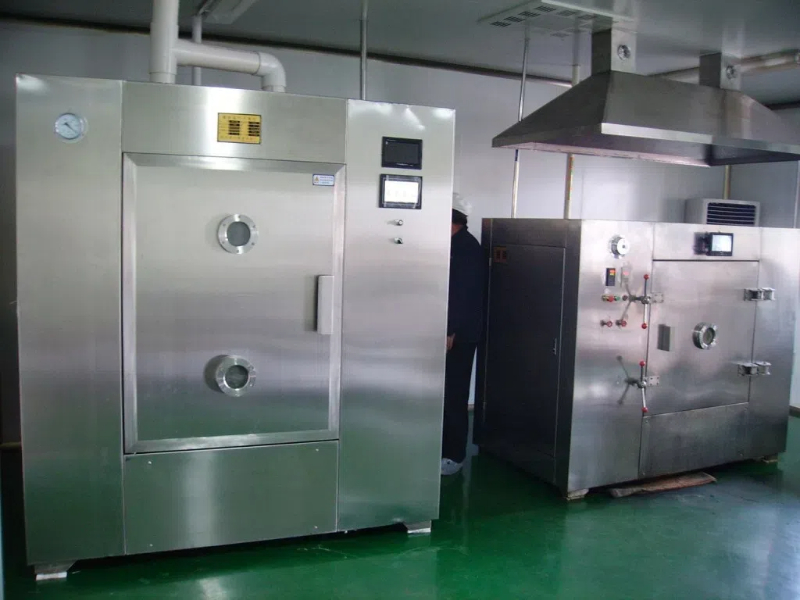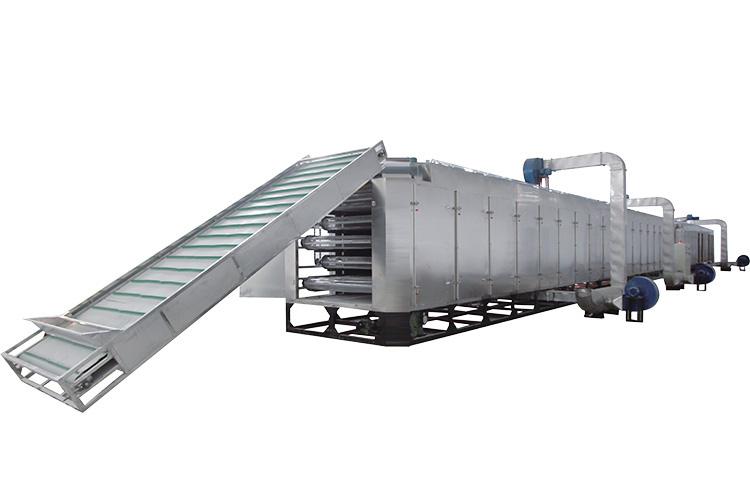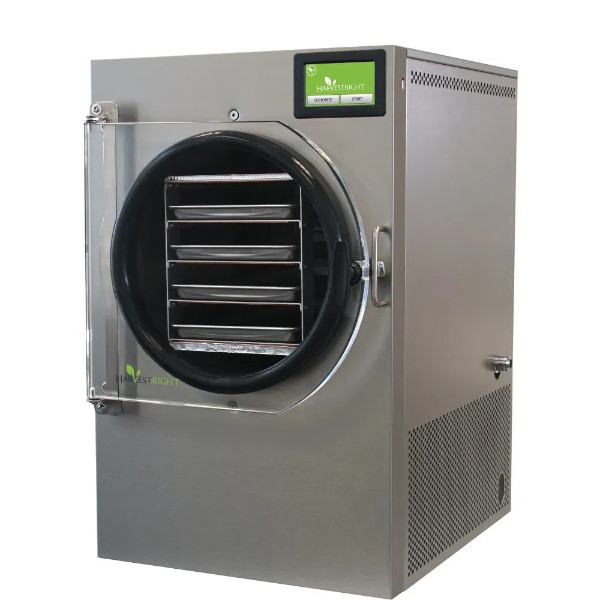
Content Menu
● Introduction
● The Importance of Food Drying in Modern Industry
● Types of Industrial Food Drying Machines
>> 1. Hot Air Dryers
>> 2. Freeze Dryers
>> 3. Spray Dryers
>> 4. Drum Dryers
>> 5. Microwave Dryers
● Key Features of Modern Industrial Food Drying Machines
>> 1. High Capacity
>> 2. Energy Efficiency
>> 3. Precision Control
>> 4. Automation
>> 5. Sanitary Design
● Applications of Industrial Food Drying Machines
>> 1. Fruit and Vegetable Processing
>> 2. Herb and Spice Production
>> 3. Meat Processing
>> 4. Dairy Industry
>> 5. Pet Food Manufacturing
● Advantages of Using Industrial Food Drying Machines
● Challenges and Considerations
● Future Trends in Industrial Food Drying
● Conclusion
● Frequently Asked Questions
>> 1. What is the main purpose of using industrial food drying machines?
>> 2. How do industrial food drying machines differ from home food dehydrators?
>> 3. What types of foods can be processed using industrial food drying machines?
>> 4. How does freeze-drying compare to other drying methods in terms of food quality?
>> 5. What factors should be considered when choosing an industrial food drying machine?
Introduction
In the ever-evolving world of food processing and preservation, industrial food drying machines have emerged as a cornerstone technology. These advanced systems play a crucial role in extending the shelf life of various food products while maintaining their nutritional value and quality. From fruits and vegetables to herbs and meats, commercial food dehydrators have revolutionized the way we preserve and process food on a large scale.
The Importance of Food Drying in Modern Industry
Food drying is an ancient preservation technique that has been modernized and scaled up to meet the demands of today's global food industry. Industrial fruit drying equipment and large-scale food drying technology have become essential tools for food manufacturers, agricultural businesses, and even small-scale producers looking to expand their operations.
The primary goal of food drying is to remove moisture from food products, thereby inhibiting the growth of bacteria, yeasts, and molds that cause spoilage. This process not only extends the shelf life of food but also reduces its weight and volume, making storage and transportation more efficient and cost-effective.

Types of Industrial Food Drying Machines
There are several types of industrial vegetable dehydration systems and food processing drying machines available in the market, each designed to handle specific types of food products or to meet particular processing requirements.
1. Hot Air Dryers
Industrial hot air food dryers are among the most common types of food drying equipment. These machines use heated air to remove moisture from food products. The food is typically spread out on trays or conveyor belts, and hot air is circulated around it, gradually reducing its moisture content.
2. Freeze Dryers
Freeze drying, also known as lyophilization, is a more advanced method used in industrial-grade food dryers. This process involves freezing the food and then reducing the surrounding pressure to allow the frozen water in the food to sublimate directly from the solid phase to the gas phase.
3. Spray Dryers
Spray drying is commonly used for liquids and slurries. In this process, the liquid food product is atomized into a hot gas stream, instantly drying it into a powder form. This method is often used for milk, coffee, and various food flavorings.
4. Drum Dryers
Drum dryers are used for drying liquid or pureed foods. The food is applied to the surface of a heated drum, and as the drum rotates, the dried food is scraped off in sheets or flakes.
5. Microwave Dryers
Microwave drying is a relatively new technology in the realm of bulk food drying solutions. It offers faster drying times and can be more energy-efficient than traditional methods for certain types of food products.
Key Features of Modern Industrial Food Drying Machines
As technology advances, so do the features and capabilities of industrial food drying machines. Here are some key features that make modern food dryers stand out:
1. High Capacity
Modern industrial food drying machines are designed for high-capacity food dehydration. They can process large volumes of food products efficiently, making them suitable for industrial-scale operations.
2. Energy Efficiency
With rising energy costs and increasing focus on sustainability, many advanced food drying technologies now incorporate energy-saving features. This not only reduces operational costs but also minimizes the environmental impact of food processing.
3. Precision Control
State-of-the-art food dryers offer precise control over temperature, humidity, and airflow. This level of control ensures consistent quality across batches and allows for the optimization of drying parameters for different food products.
4. Automation
Many industrial food drying machines now incorporate automation features, reducing the need for manual intervention and improving overall efficiency. This can include automated loading and unloading systems, as well as computerized control panels for monitoring and adjusting drying parameters.
5. Sanitary Design
Food safety is paramount in the food processing industry. Modern food dryers are designed with sanitation in mind, featuring easy-to-clean surfaces, food-grade materials, and designs that prevent the accumulation of food particles and bacteria.

Applications of Industrial Food Drying Machines
The versatility of industrial food drying machines makes them invaluable across various sectors of the food industry. Here are some common applications:
1. Fruit and Vegetable Processing
Industrial fruit drying equipment is extensively used to produce dried fruits and vegetables. These products have a longer shelf life and are popular as snacks or ingredients in various food products.
2. Herb and Spice Production
Commercial food dehydrators are crucial in the herb and spice industry. They help preserve the flavor and aroma of herbs and spices while extending their shelf life.
3. Meat Processing
Certain types of meat products, such as jerky, require careful drying. Industrial food drying machines designed for meat processing ensure safe and efficient drying while maintaining the product's texture and flavor.
4. Dairy Industry
In the dairy industry, spray dryers are commonly used to produce powdered milk and other dairy products.
5. Pet Food Manufacturing
Many pet food manufacturers use industrial drying equipment to produce dry pet food and treats.
Advantages of Using Industrial Food Drying Machines
The adoption of industrial-grade food dryers offers numerous benefits to food processors:
1. Extended Shelf Life: By removing moisture, food drying significantly extends the shelf life of products, reducing waste and improving profitability.
2. Preservation of Nutrients: Many drying methods, especially those using lower temperatures or freeze-drying, help preserve the nutritional content of food products.
3. Reduced Transportation and Storage Costs: Dried foods are lighter and take up less space, reducing transportation and storage costs.
4. Year-Round Availability: Food drying allows for the preservation of seasonal produce, making it available year-round.
5. Product Diversification: Food drying opens up possibilities for creating new product lines, such as dried snacks or ingredients for ready-to-eat meals.
Challenges and Considerations
While industrial food drying machines offer numerous benefits, there are also challenges and considerations to keep in mind:
1. Initial Investment: High-quality, large-scale food drying technology often requires a significant initial investment.
2. Energy Consumption: Despite improvements in energy efficiency, food drying can still be an energy-intensive process.
3. Product-Specific Optimization: Different food products require different drying parameters, necessitating careful optimization for each product type.
4. Quality Control: Maintaining consistent quality across large batches can be challenging and requires careful monitoring and control.
5. Regulatory Compliance: Food drying operations must comply with various food safety regulations and standards.
Future Trends in Industrial Food Drying
The field of industrial food drying continues to evolve, with several exciting trends on the horizon:
1. Integration of Industry 4.0 Technologies: The concept of "Food Drying 4.0" is emerging, incorporating technologies like IoT, AI, and big data analytics to optimize drying processes.
2. Sustainable Drying Solutions: There's a growing focus on developing more sustainable drying technologies, including the use of renewable energy sources like solar power.
3. Hybrid Drying Systems: Combining different drying technologies to optimize efficiency and product quality is becoming more common.
4. Novel Drying Methods: Research continues into new drying methods that can better preserve food quality or offer improved energy efficiency.
5. Customization and Flexibility: Future drying systems may offer greater flexibility to handle a wider variety of products or to quickly switch between different product types.
Conclusion
Industrial food drying machines have become an indispensable part of the modern food processing industry. From commercial food dehydrators to advanced food drying technology, these machines play a crucial role in preserving food, reducing waste, and meeting the growing global demand for processed food products.
As technology continues to advance, we can expect to see even more innovative and efficient food drying solutions. These developments will not only improve the quality and variety of dried food products available to consumers but also contribute to more sustainable and efficient food processing practices.
Whether you're a large-scale food manufacturer or a small producer looking to expand your operations, understanding the capabilities and potential of industrial food drying machines is crucial in today's competitive food industry landscape.

Frequently Asked Questions
1. What is the main purpose of using industrial food drying machines?
Answer: The main purpose of industrial food drying machines is to remove moisture from food products, which extends their shelf life, preserves nutritional value, reduces weight and volume for easier storage and transportation, and prevents the growth of microorganisms that cause spoilage.
2. How do industrial food drying machines differ from home food dehydrators?
Answer: Industrial food drying machines are designed for large-scale operations and offer higher capacity, more precise control over drying parameters, greater energy efficiency, and often incorporate automation features. They are also built to meet strict food safety standards and can handle a wider variety of food products compared to home dehydrators.
3. What types of foods can be processed using industrial food drying machines?
Answer: Industrial food drying machines can process a wide variety of foods, including fruits, vegetables, herbs, spices, meats, fish, dairy products, and even some prepared foods. The specific type of dryer used may vary depending on the food product being processed.
4. How does freeze-drying compare to other drying methods in terms of food quality?
Answer: Freeze-drying is often considered superior to other drying methods in terms of preserving food quality. It better maintains the original shape, texture, and nutritional content of the food. However, it is generally more expensive and time-consuming than other drying methods.
5. What factors should be considered when choosing an industrial food drying machine?
Answer: When choosing an industrial food drying machine, factors to consider include the types of food products to be dried, required capacity, available space, energy efficiency, level of automation needed, ease of cleaning and maintenance, compliance with food safety regulations, and overall cost (including initial investment and operational costs).












